An evacuee’s memorabilia
Meeting with many of the ex-evacuees and families was one of the most enjoyable tasks I carried out in my research about the evacuation. They all had unique stories to tell about their experiences during the evacuation and many managed to compile their own collections of evacuation memorabilia.
One of the largest collections of memorabilia I came across during my research was that of the late Elena Infante (nee Chini). Mrs Infante’s evacuation memorabilia is treasured by her son, Manuel Infante, who is related to my wife, and very kindly allowed me to browse through his mother’s collection.
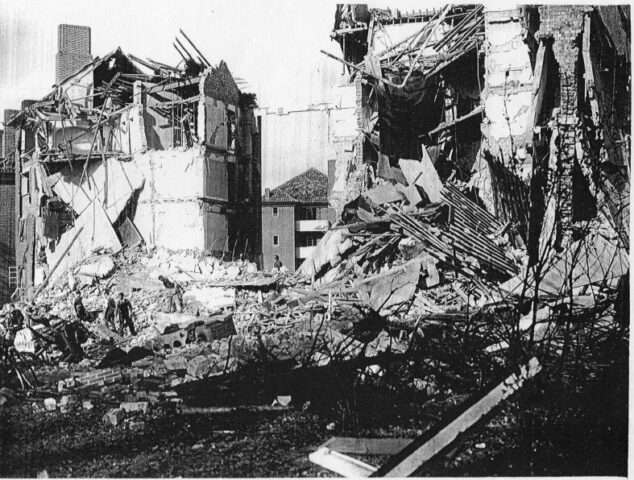
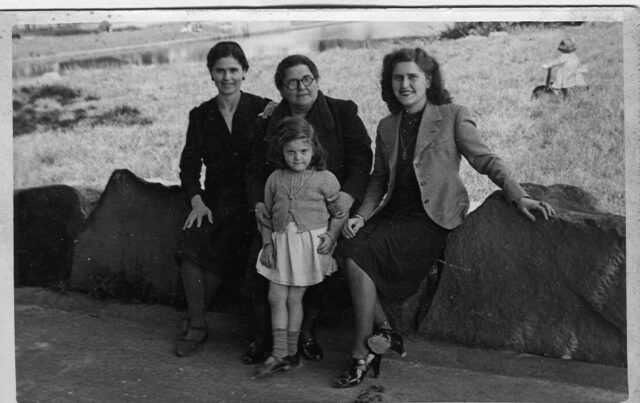
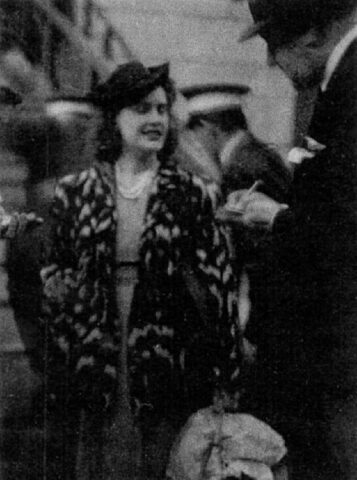
Antonia Chini and her teenaged daughter Elena, were evacuated to London on the August 19, 1940 on the SS Neuralia. On arriving in London, they were accommodated with about 200 other evacuees at the Dean Hotel in Dean Street, off Oxford Street.
Shortly after arriving in London, Ms Chini found work in a war production textile factory in Princess Street, which was very near to the Dean Hotel. In the photo of the textile factory, Ms Chini is seen in the foreground wearing a greyish dress, holding a pair of scissors and sitting by a sewing machine. Behind her, in a whitish dress, is her cousin Violet Gatt.
Just over six months later, on the April 18, 1941 and a month before the end of Blitz, a bomb hit Dean Street destroying completely one of the buildings and causing collateral damage to the Dean Hotel.
Moments before the bomb hit Dean Street, Henry Balestrino, who was a firewatcher, came out from the shelter to check that everything was all right when suddenly there was a huge explosion, killing Mr Balestrino instantly.
After the fire brigade arrived, the evacuees were able to come out of the shelter with some difficulty, as part of the pavement had been lifted by the blast and was blocking the exit of the shelter. After a lot of effort by the fire fighters etc to clear the rubble, all the residents of the Dean Hotel managed to get out from the shelter.
Once out, they noticed that the Dean Hotel had been damaged extensively and they also learned about the unfortunate death of Mr Balestrino who only moments before had been with them in the shelter.
Eventually, evacuees were taken away from the scene of the disaster to be accommodated in other places. Mrs Chini, as always during an air raid, locked her room before going to the shelter and carried the keys with her.
Mrs Chini, in the confusion that ensued during the bombing, inadvertently kept the keys to her room in her pocket. Not knowing where to return the keys, she brought them to Gibraltar when repatriated. Her grandson, Manuel Infante, has kept the keys as part of his family evacuation memorabilia and most probably the only key left of the Dean Hotel.
Amongst the large collections of memorabilia, I found a receipt for compensation received by Mrs Chini, from the Collector of Customs and Excise, to the value of £24. 8s 5d for damages to her property as result of the bombing of the Dean Hotel.
All the evacuees from the Dean Hotel were transferred to Runnyside House at Sheen Road, Courtlands, in Richmond.
Courtlands consisted of luxury flats which, just before the war, were selling at about £400. All in all, 438 evacuees were accommodated in Runnyside House.
Interestingly, before the war some of the tenants living at Courtlands were German nationals but left when the war with Germany became imminent.
At the very early stage of the Blitz, on the September 21, 1940, Runnymede House, one of the blocks of flats at Courtlands, was hit by high explosive bombs which destroyed it completely as can be seen in the photo.
The surroundings of Courtlands were full of anti-aircraft guns.
Amongst the bombing experienced by the evacuees at Courtlands, there was an incident with an unexploded bomb that fell near Courtlands. It seems that, on inspection by the bomb disposal experts, it was found that said bomb contained a lot of sawdust and sand. There was obviously a lot of speculation as to the reasons for the contents of this bomb. One of the many theories that tried to explain the mystery of these bombs was it was thought to be the work of some brave saboteurs working as forced labourers in the German ammunition factories.
When Ms Chini was evacuated, she was already engaged to Manuel Infante who was in the Police Force and stayed behind in Gibraltar.
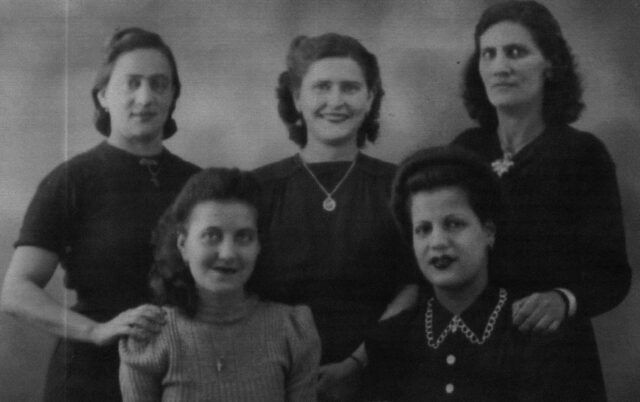
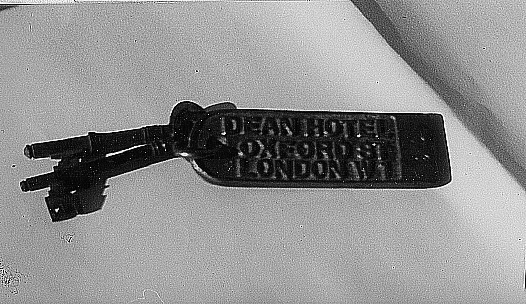
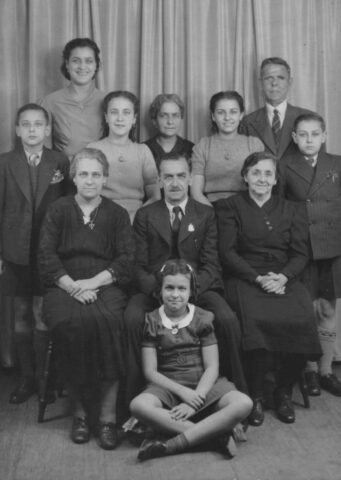
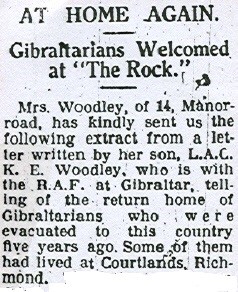
His parents were evacuated together with many of their relatives, most of whom, were lodged at Marlborough Court at Penbroke Road, where his father Manuel Infante was an air raid warden.
As her would be father-in-law, Ms Chini visited him, occasionally.
During the evacuation, Elena and Manuel, as fiancés, exchanged many letters which their son Manuel lend me for my evacuation research. It is, certainly, the largest collection of letters of evacuees that I came across during my research.
Some of the contents of the letters were very be helpful in providing me with a general knowledge and an insight of how the evacuees lived in London. From Mr Infante’s letters, I was also able to gather how the men who stayed behind had managed whilst separated from their loved ones.
Interestingly, there was no mention in Ms Chini’s letters about the bombing of the Dean Hotel or any other bombing incidents, even those which had, directly, affected the evacuees. Equally, there was also no mention in her fiancé’s letter about Gibraltar’s military activities nor of any bombing incidents.
What was noticeable from the letters was that some of them had part of the text cut off. This, no doubt, was due to the censorship.
Antonia Chini’s also exchanged letters with her husband Francisco Chini who stayed behind working in the Port Department working as engine driver.
On one occasion Antonia Chini had one of her letters returned by the Post Office in London on instructions from the censorship department.
By late autumn 1943, it was considered that Gibraltar was no longer vulnerable to enemy attacks and it was, therefore, agreed by the authorities concerned to allow for the evacuees to be repatriated.
On the March 10, 1944 notices were placed in every evacuation centre in London letting the evacuees know that arrangements were being made repatriate them, subject, to overriding considerations as to shipping and accommodation upon which the scheme depended.
The next day, the Evening News carried an article with the headlines, “12,000 London Exiles Going Home to Gibraltar, First list Ready Now, Reunion Ahead After Four Years”
Below is also cutting from an article in The Richmond and Twickenham Times about the evacuees at Courtlands.
A couple of weeks later a party consisting of 1,367 evacuees were the first to leave London and the first of all the evacuees to be repatriated.
They travelled by train to Greenock where they boarded the ships the Duchess of Richmond and the Antenor each carrying 1,170 and 197 evacuees respectively. They sailed for a few days and arrived in Gibraltar on Maundy Thursday April 6, 1944. The Duchess of Richmond berthed in the Dockyard by the three-legged crane and the Antenor anchored in the Bay of Gibraltar near the North Mole.
The evacuees onboard the Duchess of Richmond were the first to disembark. And Ms Elena Chini was the first evacuees to walk down the gangway and set foot on Gibraltar soil. She was followed by her mother Antonia Chini. When interviewed by a reporter from the Gibraltar Chronicle, Ms Chini said, “We are very happy to be home. We thank God and England for our safe return!” Incidentally, Ms Chini’s exclamatory remarks inspired me when thinking about a title for my first book about the evacuation.
Ms Elena Chini and Manuel Infante married a year later in April 1945.









